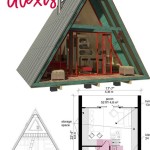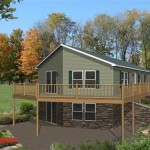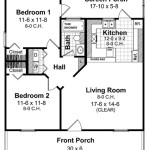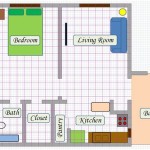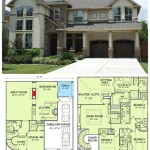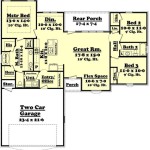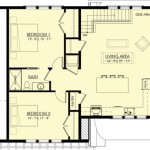Cape Cod Floor Plans: Exploring 4-Bedroom Designs
Cape Cod architecture, characterized by its simple, symmetrical design, steep roof with dormers, and central chimney, has remained a consistently popular choice for homeowners for decades. Its enduring appeal lies in its practicality, adaptability, and charming aesthetic. When considering a larger family or a need for dedicated home office space, the 4-bedroom Cape Cod floor plan offers a versatile and comfortable living environment. This article will explore the key features, common configurations, and considerations when selecting a 4-bedroom Cape Cod floor plan.
The origins of the Cape Cod style date back to 17th-century New England, reflecting the colonists' adaptation of English architectural traditions to the harsh coastal environment. The low, broad design offered protection from strong winds and heavy snow. Over time, the style evolved, incorporating modern amenities while retaining its recognizable hallmarks. The 4-bedroom variant represents a natural progression, accommodating the needs of contemporary families while staying true to the style's inherent practicality.
The classic Cape Cod house is typically 1 or 1.5 stories. A 4-bedroom version will usually incorporate the half story, or dormers, to create sufficient space on the upper level for bedrooms. The exterior is generally clad in wood shingles, although other materials such as clapboard or brick are also used. The interior is designed for efficient use of space, often featuring a central living area flanked by bedrooms and a kitchen. Careful planning is essential to create a functional and aesthetically pleasing 4-bedroom layout within the constraints of the Cape Cod's inherent design.
Key Point 1: Common Configurations of 4-Bedroom Cape Cod Floor Plans
Several common configurations exist when considering a 4-bedroom Cape Cod floor plan. These variations address different needs and lot sizes, influencing the overall layout and functionality of the home.
The Classic Two-Story Cape: This configuration presents the most straightforward expansion of the traditional Cape Cod. The first floor typically houses the main living areas, including the living room, kitchen, dining area, and potentially a master bedroom suite. The second floor, accessed by a central staircase, accommodates the remaining three bedrooms and a shared bathroom. This design maximizes living space and can efficiently accommodate a family. The roofline remains visually consistent with the traditional Cape Cod, contributing to the house's curb appeal. Dormers are often incorporated to increase headroom and natural light on the second floor.
The One-and-a-Half-Story Cape with Dormers: This is a more traditional approach to adding bedrooms to a Cape Cod. The first floor includes the living areas, kitchen, and potentially one or two bedrooms. The remaining bedrooms are located on the upper half-story, utilizing dormers to create usable space. The slope of the roof necessitates careful planning to maximize headroom and natural light on the upper level. This configuration can offer a more compact footprint, making it suitable for smaller lots. However, the sloped ceilings may present design challenges when arranging furniture and creating comfortable living spaces.
The Expanded Cape: This design involves adding wings or extensions to the original Cape Cod structure. This approach allows for a more flexible layout and can accommodate a variety of needs. For example, one wing could house a master suite, while another wing could contain additional bedrooms or a home office. The expanded Cape maintains the character of the original structure while providing ample living space. However, this design requires a larger lot and careful consideration of the overall proportions to ensure that the additions blend seamlessly with the existing architecture.
The Reverse Cape: In this less common configuration, the main living areas are located on the upper level, taking advantage of potential views or sunlight. The bedrooms are situated on the ground floor. This design can be particularly appealing for properties with sloping lots or scenic vistas. However, it may require careful consideration of accessibility and may not be suitable for individuals with mobility limitations.
Key Point 2: Interior Design and Space Optimization
Maximizing space and creating a functional and aesthetically pleasing interior is crucial in a 4-bedroom Cape Cod. Given the style's inherent limitations on square footage, thoughtful design choices are essential.
Open-Concept Living: Combining the living room, dining area, and kitchen into a single open space can create a more spacious and inviting atmosphere. This layout promotes interaction and allows for better flow between different areas of the home. Careful zoning with furniture and area rugs can help define distinct functions within the open space.
Strategic Use of Dormers: Dormers are not only an essential architectural feature of the Cape Cod but also a vital tool for maximizing space and natural light on the upper level. Carefully positioned dormers can create alcoves, window seats, or even small reading nooks. The size and placement of dormers should be carefully considered to ensure adequate headroom and minimize the impact of the sloping roof.
Built-in Storage: Incorporating built-in storage solutions, such as bookshelves, cabinets, and window seats, can help maximize space and minimize clutter. Under-stair storage and attic storage can also provide valuable space for storing seasonal items and other belongings. Built-in features can also add character and charm to the interior.
Light and Color: Lighter colors can make a space feel larger and more open. Using a consistent color palette throughout the home can create a sense of cohesion and unity. Natural light is also crucial for creating a bright and airy atmosphere. Maximize natural light by using large windows and skylights where possible. Mirrors can also be used to reflect light and create the illusion of more space.
Furniture Selection: Choosing furniture that is appropriately sized for the space is essential. Avoid bulky or oversized pieces that can overwhelm the room. Multi-functional furniture, such as sofa beds and storage ottomans, can also help maximize space and provide added functionality.
Key Point 3: Considerations for Adapting Cape Cod Style to Modern Needs
While retaining the traditional charm of a Cape Cod, incorporating modern amenities and adapting the design to contemporary needs is essential for a functional and comfortable 4-bedroom home.
Master Suite Design: Modern homeowners often desire a private master suite, including a bedroom, en-suite bathroom, and walk-in closet. Integrating this feature into a Cape Cod floor plan requires careful planning. Depending on the configuration, the master suite can be located on the first floor, in an expanded wing, or on the upper level. The layout should prioritize privacy and comfort.
Kitchen Design: The kitchen is often the heart of the home. A modern Cape Cod kitchen should be both functional and aesthetically pleasing. Incorporating modern appliances, ample counter space, and adequate storage is essential. The kitchen layout should also facilitate easy flow and interaction, especially in an open-concept design.
Bathrooms: Multiple bathrooms are often a necessity in a 4-bedroom home. Consider adding an en-suite bathroom to the master bedroom and a shared bathroom for the other bedrooms. The bathrooms should be designed with functionality and style in mind, incorporating modern fixtures and finishes.
Home Office Space: The rise of remote work has made dedicated home office space a desirable feature. A 4-bedroom Cape Cod can accommodate a home office in a spare bedroom, a converted attic space, or an addition. The office should be a quiet and comfortable space conducive to productivity.
Energy Efficiency: Modern homeowners are increasingly concerned about energy efficiency. When renovating or building a Cape Cod, consider incorporating energy-efficient features such as insulation, energy-efficient windows, and solar panels. These features can help reduce energy consumption and lower utility bills.
Accessibility: When designing a Cape Cod, consider accessibility for all occupants, including those with mobility limitations. Ramps, wider doorways, and accessible bathrooms can make the home more comfortable and accessible for everyone.
Outdoor Living: Enhance the livability of a Cape Cod by incorporating outdoor living spaces. A patio, deck, or porch can provide a relaxing and inviting space for entertaining and enjoying the outdoors. The outdoor space should be designed to complement the architecture of the home and blend seamlessly with the surrounding landscape.
Ultimately, the selection of a 4-bedroom Cape Cod floor plan involves a careful balance of traditional aesthetics and modern functionality. The considerations discussed above provide a framework for making informed decisions and creating a comfortable and stylish home that meets the needs of contemporary living.

Cape Cod House Plan With 4 Bedrooms And 2 5 Baths 3047

Cape Cod House Plan With 4 Bedrooms And 3 5 Baths 5423

Cape Cod Floor Plans Key Modular Homes

Cape Cod Floor Plans Key Modular Homes

House Plan 61470 Southern Style With 2796 Sq Ft 4 Bed Bath
Cape Cod House Plan 4 Bedrms 1 0 Batj 564 Sq Ft 157 1618

House Plan 4 Bedrooms 2 Bathrooms Garage 3274 Drummond Plans

Ham Cape Cods Modular Home Floor Plan The Plans House
Cape Cod House Plan 4 Bedrms 1 0 Batj 564 Sq Ft 157 1618

Cape Cod House Plans


